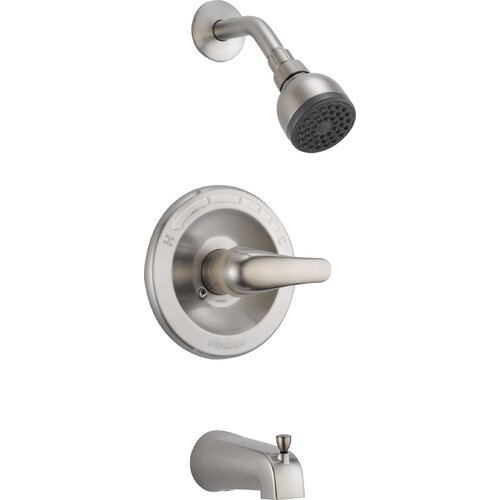A faucet is a tool for delivering normal water from a domestic plumbing system. It could consist of the following components: spout, handle(s), lift pole, cartridge, aerator, mixing chamber, and normal water inlets. Once the handle is turned on, the valve opens and handles the water stream modification under any water or temperature condition. The faucet person is usually made of brass, though die-cast zinc and chrome-plated plastic are used also.
Nearly all personal faucets are one or dual-control cartridge faucets. Some single-control types use a plastic or metal core, which operates vertically. Others use a material ball, with spring-loaded rubber seals recessed into the faucet body. The less expensive dual-control faucets contain nylon cartridges with plastic seals. Some faucets have a ceramic-disc cartridge that is much more durable.
Faucets must adhere to water conservation regulations. In america, bathroom basin faucets are actually limited to 2 gal (7.6 L) of normal water per minute, while tub and shower faucets are limited by 2.5 gal (9.5 L).

Faucets run an average of eight minutes per capita per day (pcd), according to a study by the American Water Works Connection Research Base completed in 1999 that was based on normal water use data gathered from 1,188 residences. In daily pcd use indoor normal water use was at 69 gal (261 L), with faucet use third highest at 11 gal (41.6 L) pcd. In residences with water-conserving accessories, faucets relocated up to second at 11 gal (41.6 L) pcd. Tap use was strongly related to household size. The addition of teens and adults increases water use. Sink use is also negatively related to the amount of persons working beyond your home and is leaner for individuals who have an automatic dishwasher.The manufacturing process for faucets has become highly computerized, with computers managing most of the machines. Production and efficiency have thus upgraded over the years.
Production and efficiency have improved over the years. The basic process contains forming the primary body of the faucet (some-times like the spout if no swivel is necessary), applying a finish, and then assembling the many components, accompanied by inspection and packaging. The faucet industry in addition has been impacted by environmental regulations, that have required special processes to be developed.
Komentar
Posting Komentar